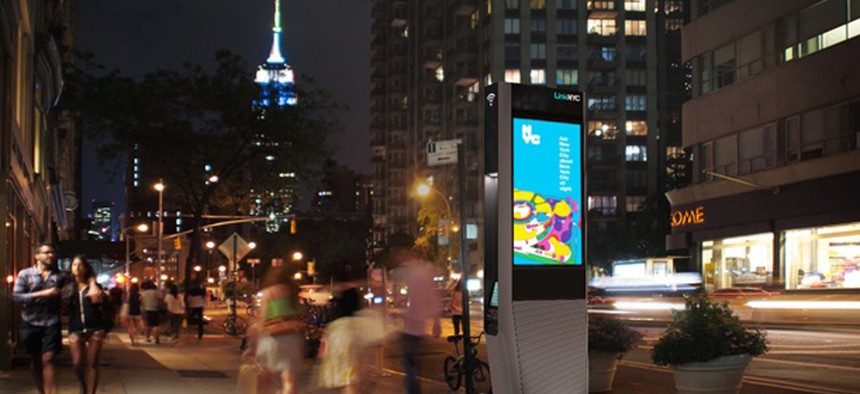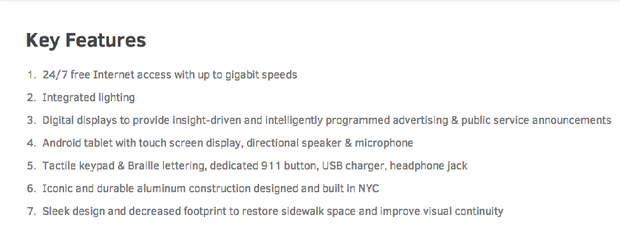R.I.P., Pay Phones. Hello, 'Links'

NYC unveils 'links'—the pay phones of the future. NYCLink

Connecting state and local government leaders
NYC's swanky future pay phones will provide unlimited Wi-Fi and free domestic calls. But will they be accessible to everyone?
Pay phones are dead in New York City.
Well, that's not entirely true—three (just three) will be maintained in their current form. The rest are in the process of being reborn. They're going to look like giant iPhones (pictured above) standing reassuringly on street corners. Befitting their futuristic new form, they will be called " links ".
Yesterday, the city's Department of Information Technology and Telecommunications in partnership with CityBridge (a consortium of technology and connectivity companies) announced their plan for the future of pay phones. CityBridge will set up and maintain the 10,000 pay phones—I mean, links—around the city and outer boroughs starting in 2015. The units will sport a cool new look , and come equipped with unlimited encrypted Wi-Fi and cell-phone charging outlets. Domestic calls will be free.

The new pay phones are going to be called "links," and they will be fancy. (LinkNYC)
Obviously, any coins pushed in to make international calls will not be enough to pay for all these fancy features. (Coin revenue is often not even enough to sustain pay phones even minus the fancy stuff—that's why they're disappearing .) But links will rely on a different revenue stream: advertising.Through ads, links aim to generate $500 million for the city over the next 12 years, and CityBridge representatives say this revenue source is key to why this project will succeed where others have failed.
But if what the service providers are aiming for is the big bucks, could they bypass poor neighborhoods in favor of spots that attract high-end advertisers?
City officials say no. About half of the pay phones that will be transformed are in the lower-income outer boroughs, says Anne Roest commissioner of the Department of Information Technology and Telecommunications .
"There's an assumption that poor people don't spend money," she says at the press conference. "One of the tricks is to figure out the advertising that's providing what folks in all communities of New York are actually buying."
Low-income individuals are more likely not to have expensive mobile phones and data plans , and may be more likely to need links to make calls or access the internet.
Another possible way costs will remain low is competition between the public-private franchise and the private service providers.
"Affordability is created by creating competition in the market," Roest says. "It's a good tension—tension is not always bad."




